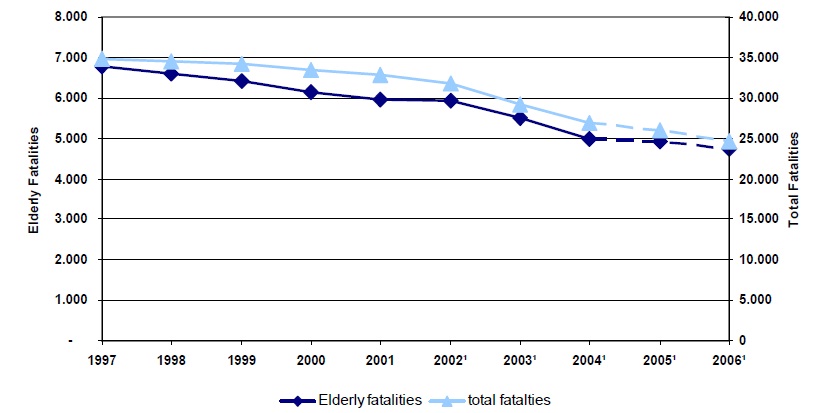
The objective of this research is the analysis of basic road safety parameters related to elderly people (> 64 years old) by the use of the EU CARE database with disaggregate data on road accidents, as well as of other international data files (Eurostat, IRTAD, etc.). Data for ten years and 19 EU countries on road accidents involving elderly people are correlated with basic safety parameters like the road user type, the road network type, the casualty age and gender as well as the day of the week, the time of the day and the season. This comparative analysis revealed a decrease of more than 30% in elderly fatalities in traffic accidents within the decade 1997 – 2006 and it was also shown that in most European countries the elderly – specifically those between 75 and 84 years old – are at greater risk of being killed in a road accident than the average person. Additionally, more than one third of elderly fatalities were pedestrians and also elderly people are proportionately more likely than middle-aged people to be killed in an accident in an urban road. Contrary to middle-aged people, elderly are mostly killed during the morning, with three-fourths of those during the week days. Specific countries with higher elderly accident fatalities for particular accident types were also identified. The analysis results allow for an overall picture of the safety level of elderly people in Europe, providing thus useful support to all decision makers working for the improvement of safety in the European road network.
| ID | pc99 |
| Presentation | |
| Full Text | |
| Tags | accident analysis, international comparisons, older drivers |













